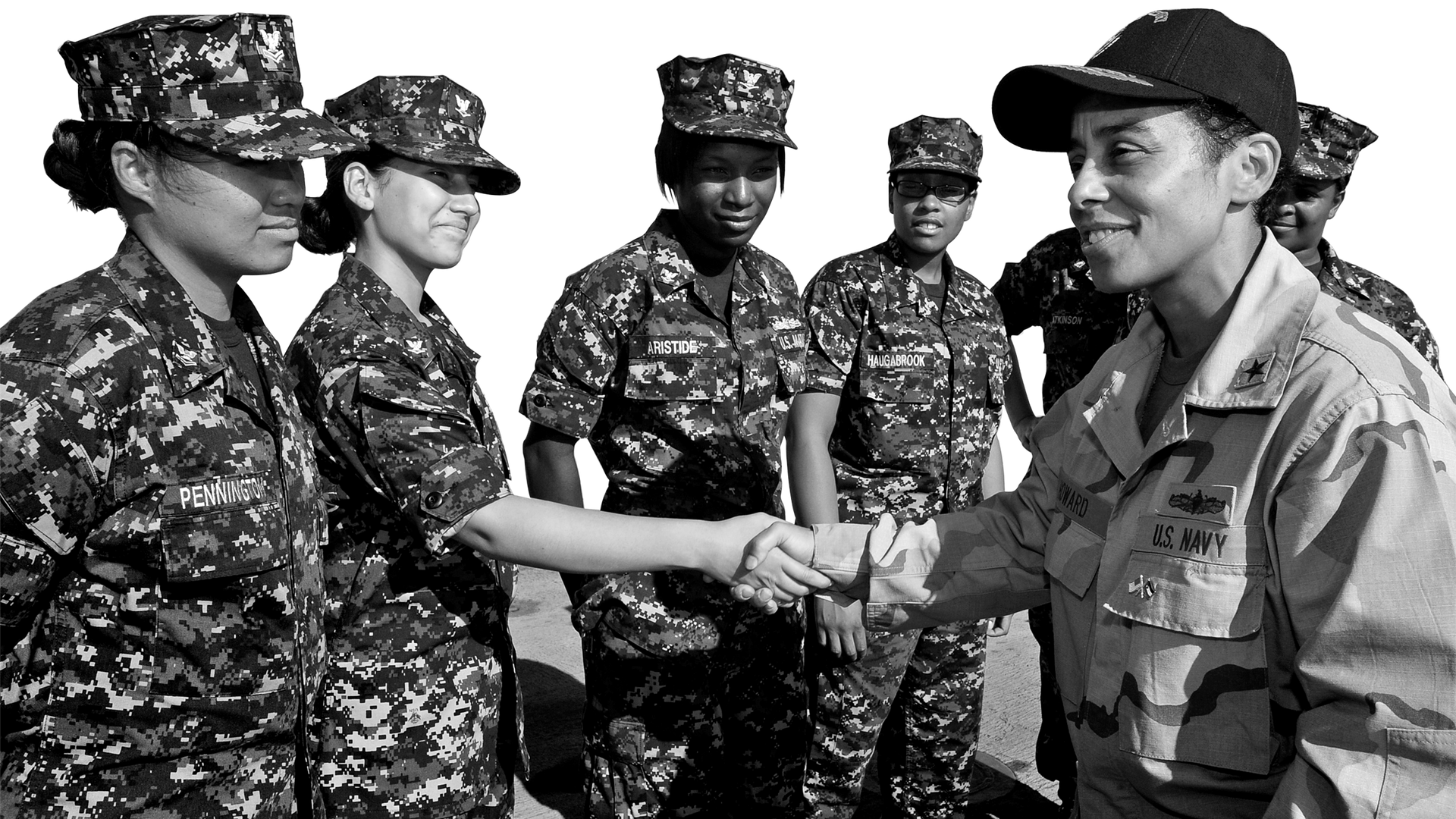
Warrior Women


Persian Gulf War
1990—1991
Warrior Women
During the Persian Gulf War (1990–1991), the U.S. military was an all-volunteer force. And African Americans made up one quarter of them. Over 35,000 women enlisted, and almost half of them were African American.
ShowHide Transcript
During the Persian Gulf War, the U.S. military was an all-volunteer force. And African Americans made up one quarter of them.
Over 35,000 women enlisted, and almost half of them were African American. These figures bear witness to the depth of African American legacies of service in the armed forces.
As in previous wars, women were barred from assignments in combat units. But because of the nature of the war, including constantly-shifting lines of combat, women often found themselves under fire.
One of those women was Lieutenant Phoebe Jeter, a South Carolina-born air defense artillery officer who led an all-male platoon.
On the night of January 21, 1991, Jeter, studying the readout on her computer, saw incoming Iraqi Scud missiles streaking towards their position.
She ordered her platoon to launch Patriot missiles to intercept them. If she did not destroy the Scuds, they would cause catastrophic damage and death.
But Jeter performed her complex duties with courage and skill. Jeter launched several Patriot missiles that night. Through complex calculations and precise targeting, she guided them into the incoming Scuds and shot down her target.
She was the first female "Scud Buster” of the entire conflict.
Throughout the war, five Army women were killed and twenty-one wounded in action, while two became prisoners of war.
After the Gulf War, Congress repealed the law that prohibited women from serving as combat pilots, though women were still not permitted to join combat infantry units.
Jeter’s service, amongst others of her caliber, paved the way not just for women to be given opportunities to serve in more roles, but for further integration of the U.S. Armed Forces.
Jeter’s service, amongst others of her caliber, paved the way not just for women to be given opportunities to serve in more roles, but for further integration of the U.S. Armed Forces.